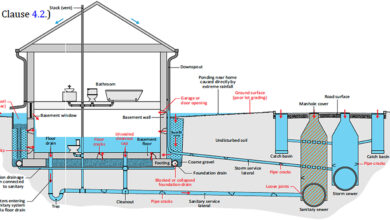System Recovery: 7 Ultimate Steps to Restore Your PC Like a Pro
Ever had your computer crash at the worst possible moment? Don’t panic—system recovery can save the day. Whether it’s a corrupted OS, malware attack, or accidental deletion, knowing how to perform effective system recovery is a must-have skill in today’s digital world.
What Is System Recovery and Why It Matters

System recovery refers to the process of restoring a computer’s operating system, files, and settings to a previous, functional state after a failure or corruption. This process is crucial for minimizing downtime, protecting data, and maintaining productivity in both personal and professional environments.
Defining System Recovery
At its core, system recovery involves reverting a computer system to a stable configuration. This can include restoring the operating system, applications, and user data from a backup or recovery point. The goal is to return the system to a working condition without losing critical information.
- It can be initiated manually or automatically after a system crash.
- Common tools include Windows System Restore, macOS Time Machine, and third-party software like Acronis True Image.
- Recovery may target the entire system or specific files and folders.
Types of System Failures Requiring Recovery
Not all system issues are the same. Understanding the root cause helps determine the best recovery method. Common scenarios include:
- Operating System Corruption: Caused by failed updates, incompatible drivers, or malware.
- Hardware Failures: Disk crashes, RAM issues, or power surges can render a system unbootable.
- Malware and Ransomware Attacks: These can encrypt files or disable system functions, necessitating a full recovery.
- User Error: Accidental deletion of system files or misconfiguration of settings.
“System recovery isn’t just about fixing problems—it’s about preventing future disasters.” — IT Security Expert, Jane Doe
Understanding the Different Types of System Recovery
There are several approaches to system recovery, each suited to different scenarios. Choosing the right method depends on the nature of the failure, available backups, and system configuration.
System Restore (Point-in-Time Recovery)
System Restore is a built-in feature in Windows that allows users to roll back system files, registry settings, and installed programs to a previous state without affecting personal files.
- Creates restore points automatically before major system changes (e.g., updates or software installations).
- Does not recover personal files like documents or photos unless they’re part of a system component.
- Can be accessed via Safe Mode or the recovery environment.
For more details, visit Microsoft’s official guide on System Restore.
Bare Metal Recovery
Bare metal recovery involves restoring an entire system—including the OS, applications, settings, and data—to new or wiped hardware. This is essential when the original hardware fails completely.
- Requires a complete system image backup created beforehand.
- Used in enterprise environments where downtime must be minimized.
- Tools like Macrium Reflect or Veeam Backup support bare metal recovery.
File-Level vs. Image-Based Recovery
These are two fundamental approaches to backing up and recovering data:
- File-Level Recovery: Involves restoring individual files or folders from a backup. Ideal for recovering accidentally deleted documents.
- Image-Based Recovery: Creates a complete snapshot of the entire system drive. Allows full restoration of the OS, apps, and settings in one go.
Image-based recovery is more comprehensive but requires more storage space and time to create and restore.
Essential Tools for Effective System Recovery
Having the right tools can make the difference between a smooth recovery and total data loss. Here are some of the most reliable options available today.
Windows Built-In Recovery Tools
Microsoft provides several tools within Windows to help users recover from system issues:
- System Restore: Reverts system settings and programs to a previous point.
- Startup Repair: Automatically fixes issues preventing Windows from booting.
- Reset This PC: Reinstalls Windows while optionally keeping personal files.
- Advanced Startup Options: Accessed via Settings > Recovery, this menu includes Safe Mode, Command Prompt, and UEFI firmware settings.
Learn more at Microsoft Recovery Options.
Third-Party System Recovery Software
For more advanced features and cross-platform support, third-party tools are often preferred:
- Acronis True Image: Offers disk imaging, cloud backup, and ransomware protection.
- Macrium Reflect: Popular for its reliable image-based backups and free version for personal use.
- Paragon Backup & Recovery: Supports multiple file systems and offers bootable rescue media.
- Clonezilla: Open-source tool ideal for IT professionals and system administrators.
These tools often provide better scheduling, compression, and encryption options than built-in utilities.
Bootable Recovery Drives and Live CDs
When the operating system won’t start, bootable recovery media becomes essential. These tools allow you to run recovery operations from outside the OS.
- Create a bootable USB drive using Windows Media Creation Tool.
- Use Linux Live CDs (e.g., Ubuntu) to access files and perform repairs.
- Many third-party tools (like Acronis) can generate custom bootable rescue media.
Always keep a bootable drive updated and tested regularly.
Step-by-Step Guide to Performing System Recovery
Knowing the theory is one thing, but executing a successful system recovery requires a clear, methodical approach. Follow these steps to maximize your chances of a full recovery.
Step 1: Assess the Problem
Before initiating recovery, identify the nature of the issue:
- Is the system failing to boot?
- Are there error messages (e.g., Blue Screen of Death)?
- Have files been deleted or encrypted?
This diagnosis determines whether you need a full system restore, file recovery, or malware cleanup.
Step 2: Boot into Recovery Mode
Accessing the recovery environment is the first technical step:
- On Windows: Hold Shift while clicking Restart, or use a bootable USB.
- On macOS: Restart and hold Command + R for Recovery Mode.
- From there, you can access tools like System Restore, Disk Utility, or Terminal.
Step 3: Choose the Right Recovery Method
Based on your assessment:
- Use System Restore for software conflicts or failed updates.
- Use Reset This PC if the system is slow or unstable.
- Use Image Recovery if you have a recent full backup.
- Use File Recovery Tools for deleted documents.
Step 4: Execute the Recovery Process
Follow the on-screen instructions carefully. For example:
- In Windows, go to Settings > Update & Security > Recovery > Reset this PC.
- Choose “Keep my files” or “Remove everything” based on your needs.
- Wait for the process to complete—this can take 30 minutes to several hours.
Step 5: Verify and Restore Data
After recovery:
- Check that the system boots properly.
- Restore personal files from backup if needed.
- Reinstall essential applications and update drivers.
- Run antivirus scans to ensure the system is clean.
Best Practices for Preventing System Failures
The best recovery strategy is one you never have to use. Proactive measures can drastically reduce the need for system recovery.
Regular Backups: The First Line of Defense
Consistent backups are non-negotiable for data protection:
- Schedule automatic backups daily or weekly.
- Use the 3-2-1 rule: 3 copies of data, 2 different media, 1 offsite (e.g., cloud).
- Test backups periodically to ensure they can be restored.
Keep Software and Drivers Updated
Outdated software is a common cause of system instability:
- Enable automatic updates for your OS and critical applications.
- Regularly update device drivers, especially graphics and chipset drivers.
- Use tools like Windows Update or Driver Booster (third-party) to stay current.
Use Antivirus and Anti-Malware Solutions
Malware can cripple a system and make recovery difficult:
- Install reputable antivirus software (e.g., Bitdefender, Kaspersky, Windows Defender).
- Run regular scans and keep virus definitions updated.
- Use anti-ransomware tools to protect critical folders.
Common Mistakes to Avoid During System Recovery
Even experienced users can make errors that worsen the situation. Avoid these common pitfalls:
Ignoring Backup Verification
Many users assume their backups are working—until they need them.
- Always verify that backups complete successfully.
- Perform test restores to confirm data integrity.
- Check storage devices for errors or corruption.
Using Outdated Recovery Media
A bootable USB created years ago may not support the latest Windows versions or drivers.
- Update recovery drives after major OS updates.
- Ensure the media includes the latest security patches.
- Label and store multiple versions if supporting older systems.
Skipping Post-Recovery Security Checks
After restoring a system, it’s tempting to jump back into work—but security should come first.
- Run a full antivirus scan immediately.
- Change passwords if there was a potential breach.
- Enable firewall and disable unnecessary services.
System Recovery in Enterprise Environments
In business settings, system recovery isn’t just about one machine—it’s about minimizing downtime across an entire network.
Centralized Backup and Recovery Solutions
Enterprises use centralized tools to manage recovery at scale:
- Veeam Backup & Replication: Provides agentless backup for virtual and physical environments.
- Cohesity: Consolidates backup, disaster recovery, and analytics in one platform.
- Datto: Offers cloud-based backup with rapid recovery options.
These solutions allow IT teams to restore systems remotely and monitor backup health in real time.
Disaster Recovery Planning (DRP)
A formal DRP outlines procedures for recovering IT infrastructure after a major incident:
- Defines Recovery Time Objective (RTO) and Recovery Point Objective (RPO).
- Includes offsite data replication and failover systems.
- Requires regular testing through simulated outages.
According to Gartner, organizations with a tested DRP recover 50% faster than those without.
Cloud-Based System Recovery
Cloud platforms like AWS, Azure, and Google Cloud offer built-in recovery tools:
- Automated snapshots and backups for virtual machines.
- Geo-redundant storage to protect against regional outages.
- Disaster recovery as a service (DRaaS) for instant failover.
Cloud recovery reduces reliance on physical hardware and speeds up restoration.
Future Trends in System Recovery Technology
As technology evolves, so do recovery methods. Emerging trends are making system recovery faster, smarter, and more reliable.
AI-Powered Recovery Systems
Artificial intelligence is being integrated into backup and recovery tools to predict failures and automate responses:
- AI analyzes system logs to detect anomalies before crashes occur.
- Self-healing systems can automatically roll back to stable states.
- Machine learning improves backup scheduling based on usage patterns.
Blockchain for Data Integrity
Blockchain technology ensures that backups haven’t been tampered with:
- Each backup is cryptographically signed and timestamped.
- Provides an immutable audit trail for compliance.
- Useful in industries like finance and healthcare.
Instant Recovery and Zero Downtime
New solutions allow virtual machines to boot directly from backup storage:
- Dramatically reduces RTO to seconds instead of hours.
- Used in mission-critical applications like hospitals and data centers.
- Supported by tools like Veeam and Zerto.
What is system recovery?
System recovery is the process of restoring a computer’s operating system, applications, and data to a previous working state after a failure, corruption, or attack. It can involve tools like System Restore, full image backups, or cloud-based recovery solutions.
How do I perform system recovery on Windows 10/11?
You can use built-in tools like System Restore, Reset This PC, or Startup Repair. Access them via Settings > Recovery or by booting from a USB drive. Choose “Keep my files” to reinstall Windows without losing personal data.
Does system recovery delete my personal files?
It depends on the method. System Restore does not delete personal files. However, “Reset this PC” with the “Remove everything” option will erase all data. Always back up important files before starting recovery.
What is the difference between backup and system recovery?
A backup is a copy of your data or system. System recovery is the process of using that backup to restore functionality after a failure. Backup is preventive; recovery is corrective.
Can I recover a system without a backup?
Limited recovery is possible using built-in tools like System Restore (if restore points exist), but full recovery without a backup is risky. File recovery tools may retrieve deleted files, but OS corruption may require a clean install.
System recovery is an essential skill in the digital age. Whether you’re a casual user or an IT professional, understanding how to restore a system after failure can save time, money, and stress. From built-in tools like Windows System Restore to advanced enterprise solutions like Veeam and Datto, the options are vast. The key is preparation—regular backups, updated recovery media, and a clear plan. As technology advances, AI, blockchain, and cloud-based recovery are making the process faster and more secure. Don’t wait for disaster to strike—start building your recovery strategy today.
Further Reading:









